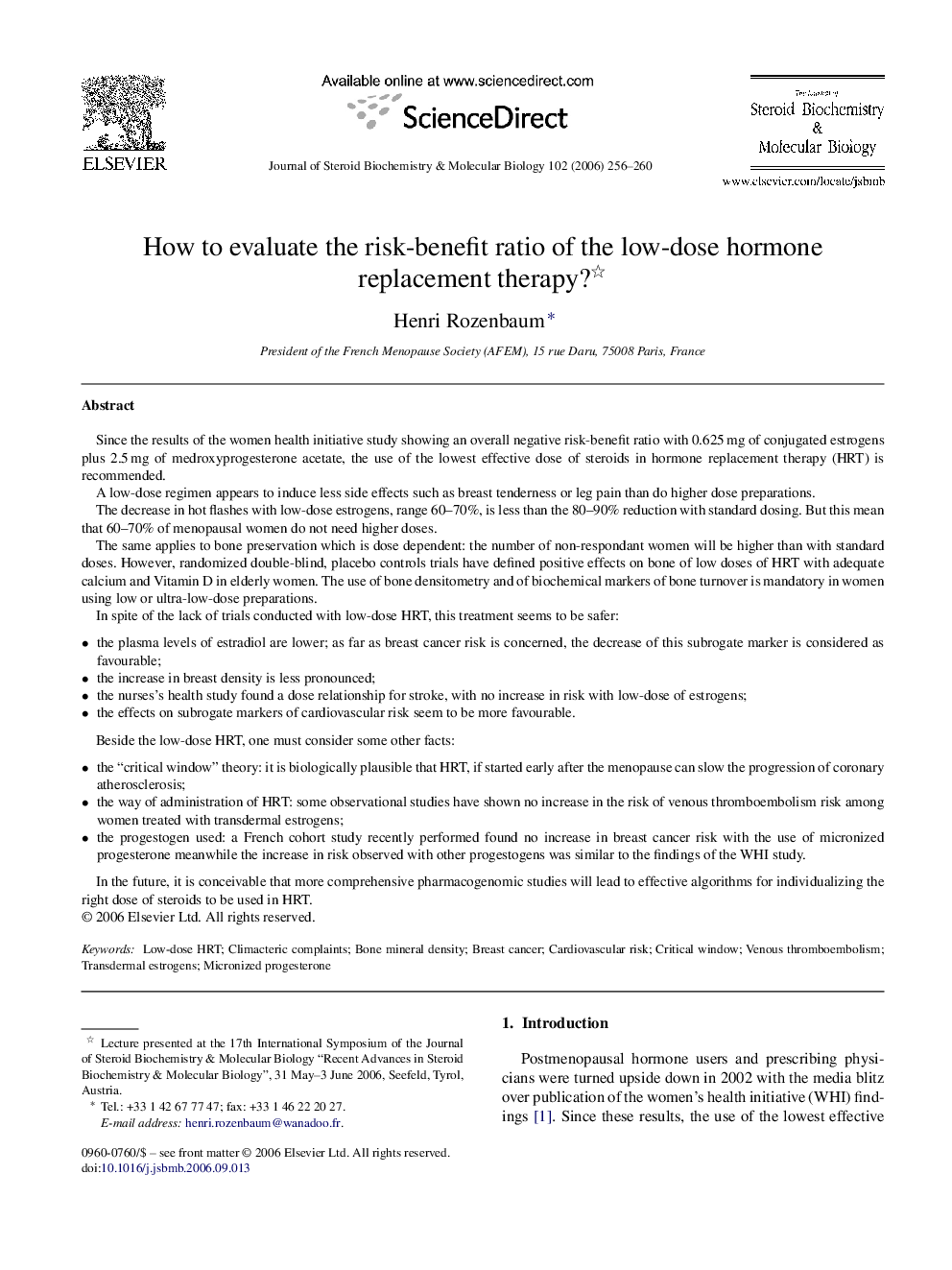| Article ID | Journal | Published Year | Pages | File Type |
|---|---|---|---|---|
| 1992765 | The Journal of Steroid Biochemistry and Molecular Biology | 2006 | 5 Pages |
Since the results of the women health initiative study showing an overall negative risk-benefit ratio with 0.625 mg of conjugated estrogens plus 2.5 mg of medroxyprogesterone acetate, the use of the lowest effective dose of steroids in hormone replacement therapy (HRT) is recommended.A low-dose regimen appears to induce less side effects such as breast tenderness or leg pain than do higher dose preparations.The decrease in hot flashes with low-dose estrogens, range 60–70%, is less than the 80–90% reduction with standard dosing. But this mean that 60–70% of menopausal women do not need higher doses.The same applies to bone preservation which is dose dependent: the number of non-respondant women will be higher than with standard doses. However, randomized double-blind, placebo controls trials have defined positive effects on bone of low doses of HRT with adequate calcium and Vitamin D in elderly women. The use of bone densitometry and of biochemical markers of bone turnover is mandatory in women using low or ultra-low-dose preparations.In spite of the lack of trials conducted with low-dose HRT, this treatment seems to be safer:•the plasma levels of estradiol are lower; as far as breast cancer risk is concerned, the decrease of this subrogate marker is considered as favourable;•the increase in breast density is less pronounced;•the nurses's health study found a dose relationship for stroke, with no increase in risk with low-dose of estrogens;•the effects on subrogate markers of cardiovascular risk seem to be more favourable.Beside the low-dose HRT, one must consider some other facts:•the “critical window” theory: it is biologically plausible that HRT, if started early after the menopause can slow the progression of coronary atherosclerosis;•the way of administration of HRT: some observational studies have shown no increase in the risk of venous thromboembolism risk among women treated with transdermal estrogens;•the progestogen used: a French cohort study recently performed found no increase in breast cancer risk with the use of micronized progesterone meanwhile the increase in risk observed with other progestogens was similar to the findings of the WHI study.In the future, it is conceivable that more comprehensive pharmacogenomic studies will lead to effective algorithms for individualizing the right dose of steroids to be used in HRT.
